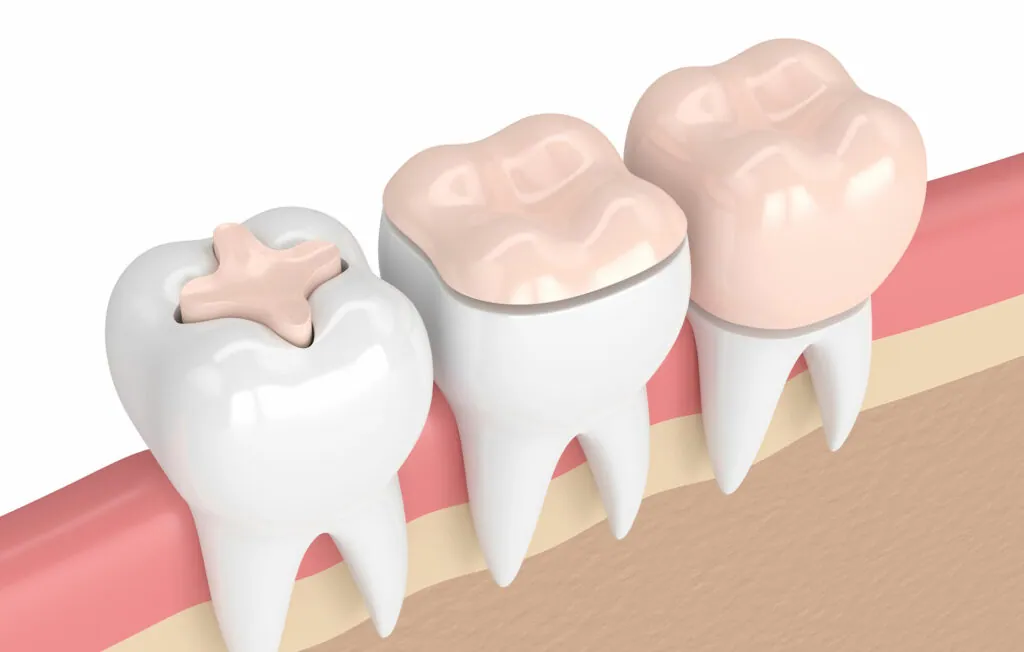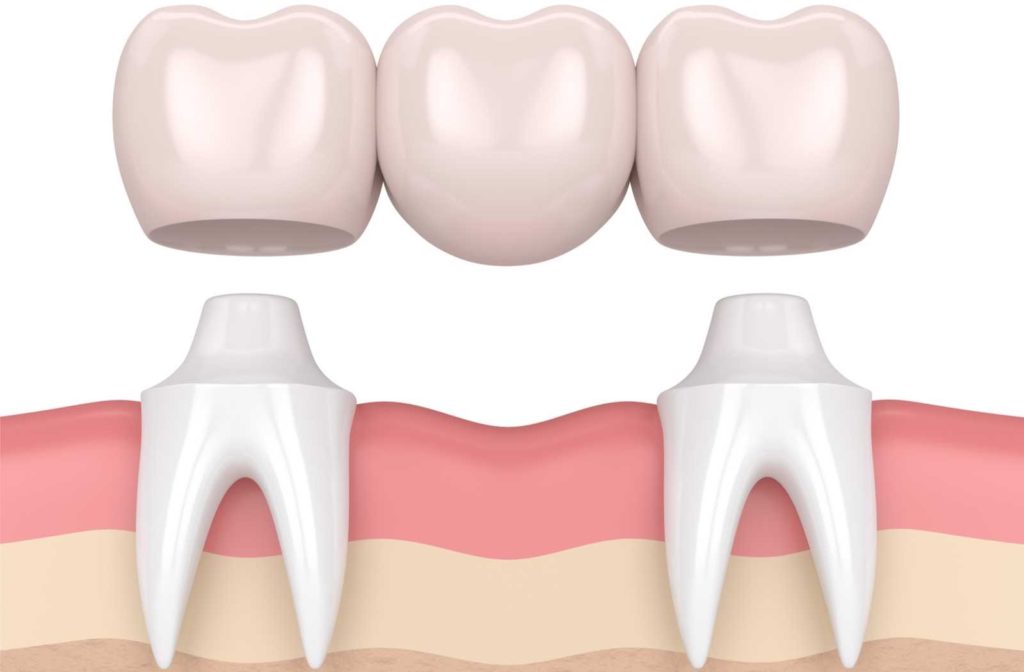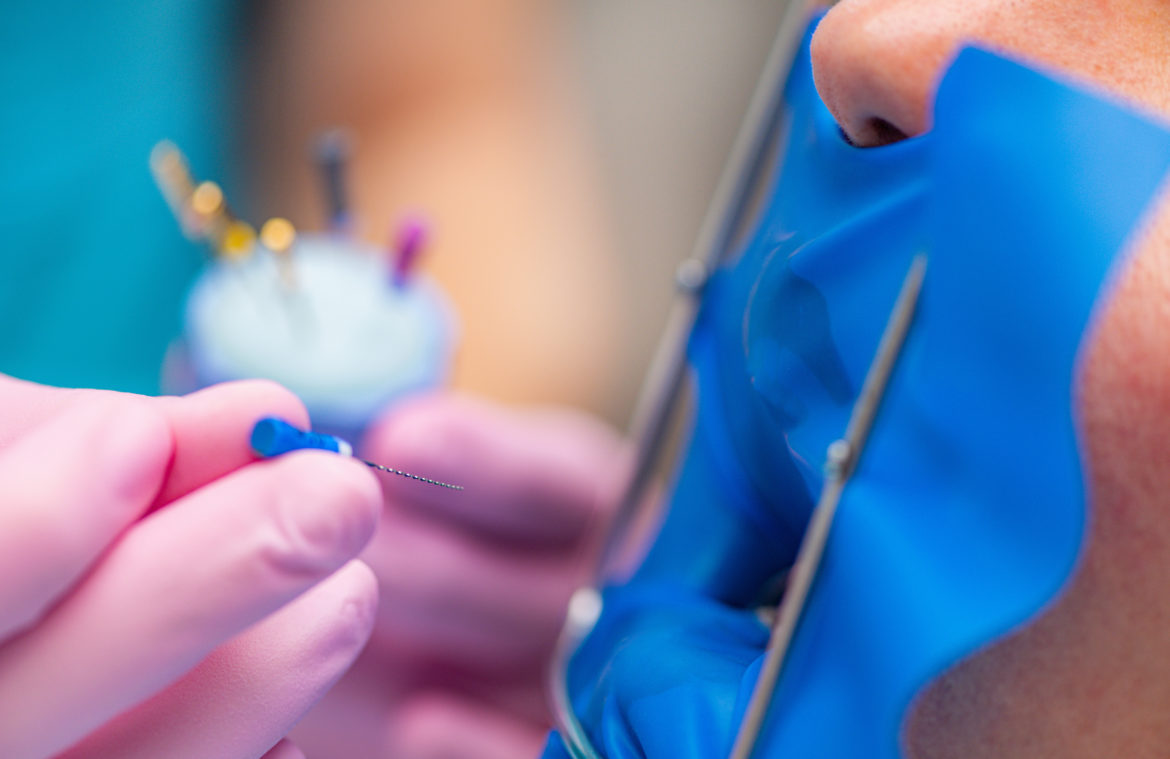
Prosthodontics primary task is to replace missing teeth, respectively all teeth and thus improve or restore the patient’s chewing.
Prosthodontics
Prosthodontics primary task is to replace missing teeth, respectively all teeth and thus improve or restore the patient’s chewing. It prevents jaw diseases jaw, restores the original appearance of the patient and improves pronunciation.
There are multiple types of prosthetics. Removable prosthetics are totally or partially removable attached by fasteners. Other special prostheses made of elastic resin (Flex) do not contain metallic elements and are light weighted and flexibility.
Fixed prosthetics include crowns and bridges from metal ceramics or metal-free zirconium ceramics. This includes aesthetic veneer cover-Venera, which are of pressed metal-free ceramics. These are used for aesthetic treatments of the frontal segment – e.g.Closing gaps, adjusting thecolour of teeth (with tetracycline teeth) and tooth shape modification.

Filling inlays, onlays
To restore moderately damaged teeth the appropriate dental solution is to use fillers known as inlays or onlays. Their use is also recommended in cases where the tooth is broken or cracked, but when the damage is not too severe to require the construction of a ceramic crown. These can be made of composite materials, similar to the white filler, or ceramic materials. These are frequently used as a replacement for amalgam fillings, which shows to look more natural.
Crowns
If the damage in the tooth is extensive, ceramic crowns are used for the reconstruction. There are several types of materials, and the choice of the right one depends on whether the crown treats one or more teeth, if it is a bridge, or if it is a treatment ofthe front tooth. In any case the result of the reconstruction is to bring the tooth to its original form.
In the first phase, the treated tooth is smoothened and prints are taken. The next step is performed by the dental technology, which designs and makes the crown. While the crown is being made, the tooth is protected by a provisional resin crownto make sure the patients can easily eat, talk, and mainly for the surrounding to not notice that a dental treatment is being done. The last visit at the dentist will replace the temporary crown by a new, final one


Bridges
Where there are one or more missing teeth the prosthetic solution would be to design a suitable bridge construction. In this case it is necessary to grind down the teeth which re besidesthe missing tooth. Previously a careful consideration based onclinical examinations and x-raysof these teeth are done. Dependent on the type of tooth to be replaced, its standing with the opposing teeth, the extent to which theneighbouring teeth are affected by the problem, to what extent have the teeth been previously treated, and also consider the periodontal status of teeth pillar to cope with the increased burden. Accordingly, just below the bridge there is only a need to grind the two neighbouring teeth, or in some cases the number could be higher.
The treatment itself is painless with local anaesthesia. Firstly piling teeth are sanded and prints are takes. Till dental technician finishes the denture, the patient receives a substitute bridge, which is firmly cemented onto the polished teeth. At each stage of the treatment, the patient leaves the ambulance with some kind of natural looking teeth replacement.
Dentures
In specific cases where there is not a possibility to construct a fixed replacement or even place implants, it is necessary to make dentures for the missing teeth. In this case, it needs a thorough analysis of the planned treatment to ensure a optimum solution. We always try to choose a solution that ensures the stability of the replacement to its use and patients comfort. Due to the complexity of such treatments, a detailed plan of the treatment is always done.


Veneers
Veneers are an ideal solution to cover the front teeth’s aesthetic problems. Common usages of ventures are used when a patient wishes to correct the change in their colour, shape or position of teeth. The main advantage is the minimum interference with the front surface of the tooth and grinding in this case is not as extensive. Dissected front surface has a thickness of about 0.5 to 0.8 millimetres and a thin composite or ceramic veneer can be used.














